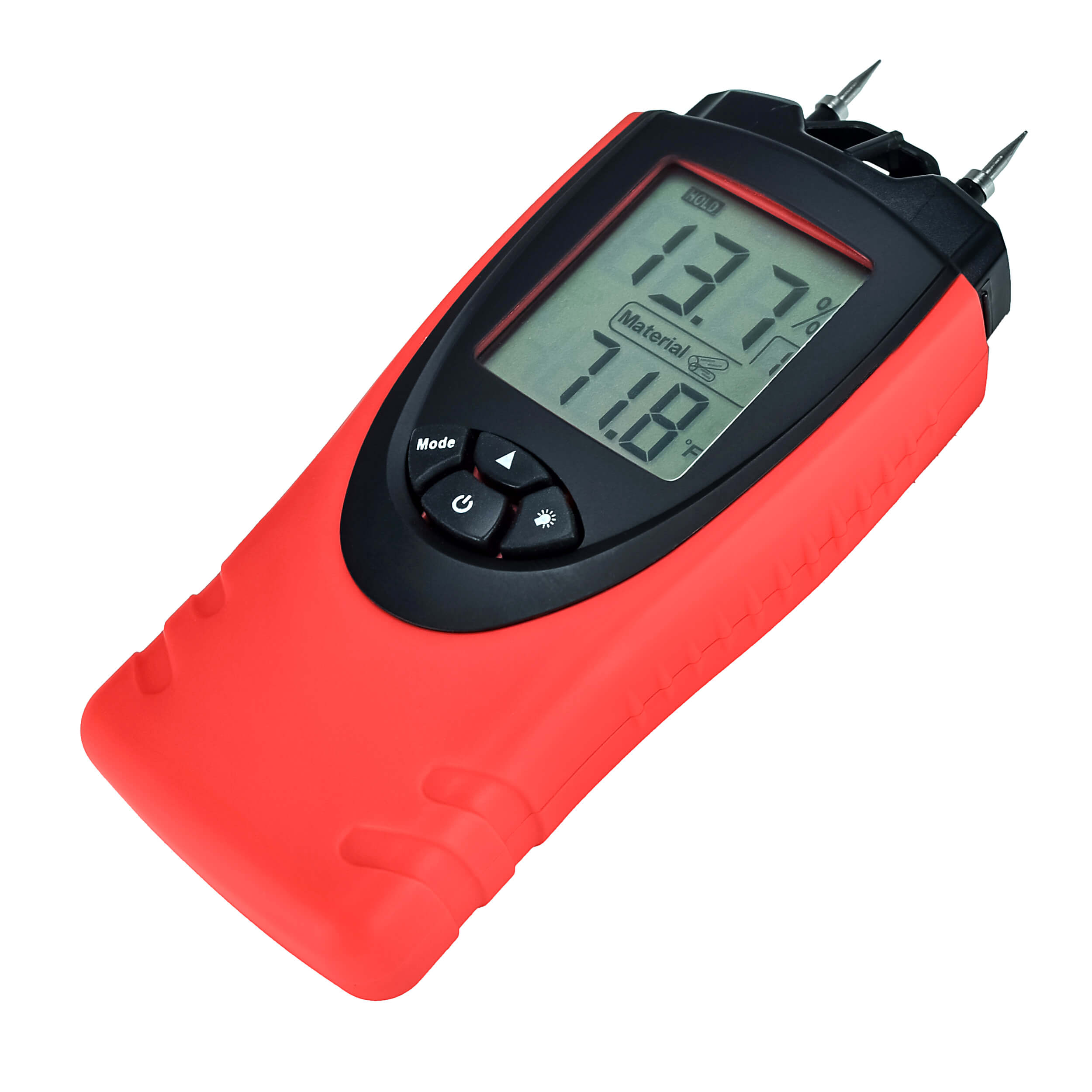Delve Into the Globe of Moisture Meters: Every Little Thing You Need to Know
In the realm of moisture meters lies a world of accuracy and functionality that frequently goes unnoticed. These tools, while relatively straightforward, hold a wide range of info that can substantially affect different sectors and applications. Recognizing exactly how moisture meters run, the various types readily available, and their varied uses can shed light on their relevance in guaranteeing quality and effectiveness. By exploring the details of wetness meters, one can reveal an important device that transcends plain measurement, supplying insights that can make a significant difference in countless fields.
Just How Moisture Meters Work
Moisture meters operate by measuring the electric conductivity or capacitance of products to identify the moisture web content present. These meters are vital devices across different sectors, consisting of woodworking, farming, and building and construction. By utilizing various techniques such as pin-type or pinless technology, wetness meters supply precise analyses that aid specialists make educated choices.
Pin-type moisture meters function by placing the sharp pins into the material being tested. On the various other hand, pinless wetness meters utilize electromagnetic signals to scan a bigger location without triggering any damages to the product's surface.
Regardless of the method made use of, dampness meters play a critical function in avoiding issues such as mold and mildew development, structural damage, or product issues brought on by excess moisture. Comprehending just how these meters job is vital for making certain the top quality and stability of materials in numerous applications.
Types of Moisture Meters
Given the essential function moisture meters play in numerous industries, it is important to recognize the different kinds offered to professionals for precisely assessing wetness levels - Moisture Meter. There are mostly two primary sorts of wetness meters: pin-type and pinless wetness meters

On the other hand, pinless dampness meters utilize electro-magnetic sensor plates to check a bigger area of the product without causing any kind of damage. This kind is suitable for promptly scanning large locations and is commonly utilized for floor covering, walls, and ceilings. Pinless meters are hassle-free for taking readings on completed surfaces without leaving any type of noticeable marks.
Both sorts of wetness meters have their benefits and are chosen based upon the specific demands of the work handy. Comprehending the distinctions between these types is critical for experts to make precise dampness assessments.
Applications Across Industries
Construction specialists depend on dampness meters to analyze the wetness degrees in building products like timber, drywall, and concrete, which is crucial for preserving architectural integrity and stopping issues like rot or mold and mildew. The flooring market makes use of moisture meters to determine the wetness web content in subfloors prior to installing various floor treatments, avoiding a knockout post expensive problems due to excess dampness. In the food sector, moisture meters are used to keep an eye on and control moisture levels in items such as grains, nuts, and dried out fruits to maintain freshness and high quality.
Tips for Making Use Of Moisture Meters
Use the dampness meter's calibration setups to make certain accurate readings when gauging the dampness content in various materials. Calibration is crucial for the proper functioning of a wetness meter. Prior to each usage, it is a good idea to examine and change the calibration setups according to the certain product being examined. In addition, ensure the meter is established to the correct moisture range for the material you are gauging to acquire the most exact results.
When making use of a pin-type moisture meter, insert the pins to the appropriate deepness advised for the material being evaluated. dig this This ensures that the moisture analyses are drawn from the appropriate depth within the product, providing a more exact depiction of its moisture content. For pinless dampness meters, keep in mind to maintain correct call with the material's surface area to get trustworthy analyses.
On a regular basis check and change the batteries in your moisture meter to avoid unreliable analyses because of reduced power. Store the meter in a secure and dry location when not in usage to extend its life-span and maintain its precision. By adhering to these suggestions, you can maximize the performance of your dampness meter and obtain accurate moisture web content dimensions across different products.
Upkeep and Calibration
To guarantee the precision of dampness next page content measurements, routine upkeep and calibration of the moisture meter are crucial steps in its appropriate performance. Upkeep entails keeping the moisture meter cost-free and clean from debris that might impact its readings. It is necessary to comply with the supplier's standards for cleaning to avoid damage to the gadget. Furthermore, routine calibration is needed to validate the accuracy of the analyses. Calibration adjusts the moisture meter to guarantee that it offers constant and trustworthy outcomes.
Calibration should be carried out occasionally, especially if the moisture meter is used often or in vital applications where precise dimensions are required. By keeping and adjusting the moisture meter routinely, customers can trust the precision of the moisture material measurements acquired.
Verdict

In final thought, dampness meters play an important duty in numerous industries by precisely gauging the dampness content of materials. Comprehending just how these devices work, the various types available, and appropriate upkeep and calibration are crucial for obtaining reputable outcomes. Whether in construction, manufacturing, or agriculture, making use of wetness meters assists make sure quality control and efficiency in processes.

In conclusion, dampness meters play a crucial duty in numerous markets by precisely measuring the moisture web content of products.